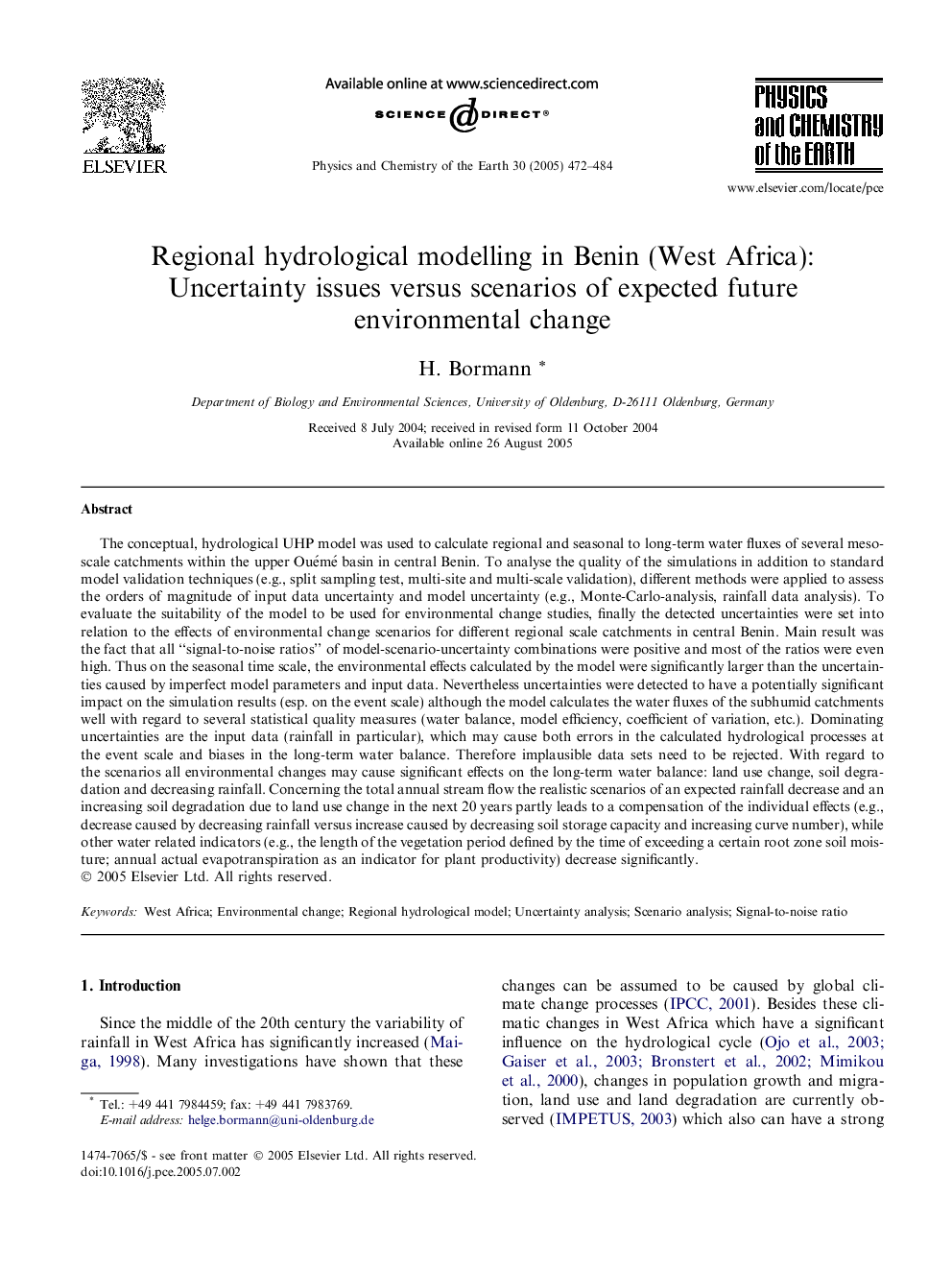| Article ID | Journal | Published Year | Pages | File Type |
|---|---|---|---|---|
| 10120054 | Physics and Chemistry of the Earth, Parts A/B/C | 2005 | 13 Pages |
Abstract
The conceptual, hydrological UHP model was used to calculate regional and seasonal to long-term water fluxes of several meso-scale catchments within the upper Ouémé basin in central Benin. To analyse the quality of the simulations in addition to standard model validation techniques (e.g., split sampling test, multi-site and multi-scale validation), different methods were applied to assess the orders of magnitude of input data uncertainty and model uncertainty (e.g., Monte-Carlo-analysis, rainfall data analysis). To evaluate the suitability of the model to be used for environmental change studies, finally the detected uncertainties were set into relation to the effects of environmental change scenarios for different regional scale catchments in central Benin. Main result was the fact that all “signal-to-noise ratios” of model-scenario-uncertainty combinations were positive and most of the ratios were even high. Thus on the seasonal time scale, the environmental effects calculated by the model were significantly larger than the uncertainties caused by imperfect model parameters and input data. Nevertheless uncertainties were detected to have a potentially significant impact on the simulation results (esp. on the event scale) although the model calculates the water fluxes of the subhumid catchments well with regard to several statistical quality measures (water balance, model efficiency, coefficient of variation, etc.). Dominating uncertainties are the input data (rainfall in particular), which may cause both errors in the calculated hydrological processes at the event scale and biases in the long-term water balance. Therefore implausible data sets need to be rejected. With regard to the scenarios all environmental changes may cause significant effects on the long-term water balance: land use change, soil degradation and decreasing rainfall. Concerning the total annual stream flow the realistic scenarios of an expected rainfall decrease and an increasing soil degradation due to land use change in the next 20 years partly leads to a compensation of the individual effects (e.g., decrease caused by decreasing rainfall versus increase caused by decreasing soil storage capacity and increasing curve number), while other water related indicators (e.g., the length of the vegetation period defined by the time of exceeding a certain root zone soil moisture; annual actual evapotranspiration as an indicator for plant productivity) decrease significantly.
Related Topics
Physical Sciences and Engineering
Earth and Planetary Sciences
Geochemistry and Petrology
Authors
H. Bormann,
